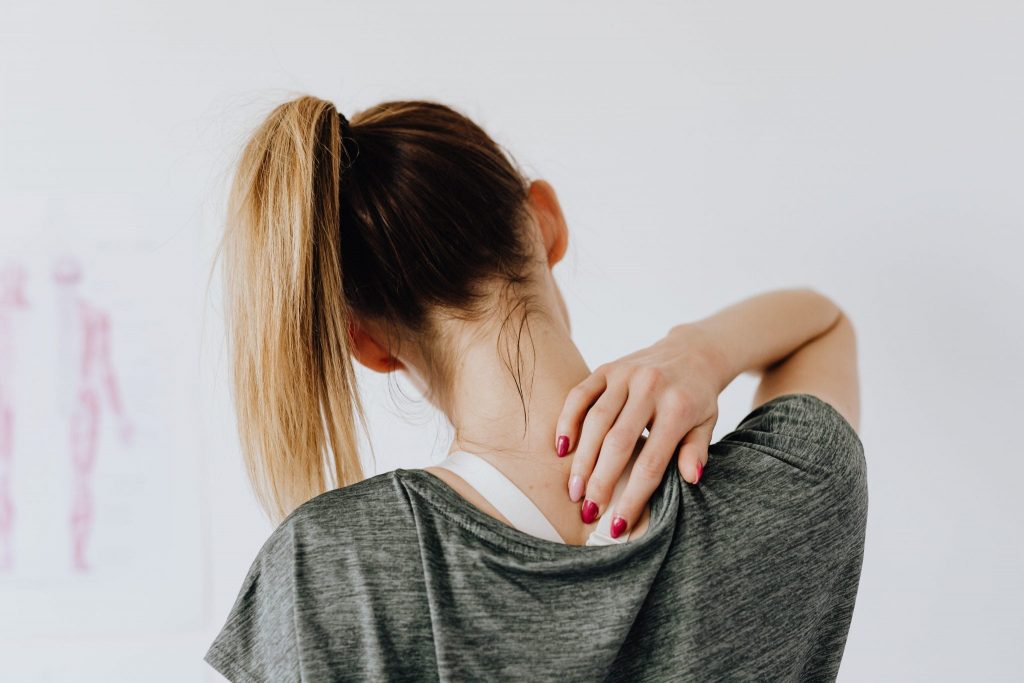
Back pain is a common health issue that can have no definite cause, or it may be a symptom of a more severe condition. For women, back pain is more likely to become chronic than it is for men, especially when they have reached menopause. Several conditions are more common in women that cause back pain, as well as some that are exclusive to women. In this article, we’ll go over five conditions that can cause women to feel back pain, as well as what you can do about them.
Sacroiliac Joint Dysfunction
The Sacroiliac (SI) joint is the joint that connects the bottom of the spine to the top of the pelvis. Lower back pain may be a sign of dysfunction in the SI joint, also known as sacroiliitis. Common symptoms are lower back pain, aches with flares of sharp pain over the buttocks, and shooting pain traveling down the thigh but not past the knee.
SI joint dysfunction can happen to both men and women, but it is more common in women due to structural differences in the skeletal system. Women typically have a smaller surface area of the joint, which leads to more pressure on it. They also have a wider, flatter, and more tilted SI joint than men, which makes it easier for the joint to slip slightly out of alignment.
Endometriosis
Endometriosis is one condition that exclusively affects women. It is a gynecological condition that causes uterine tissues to grow outside of the uterus. It’s commonly treated with hormonal birth control like the pill, and the most common symptom is extremely severe menstrual pain, including lower back pain that worsens during menstruation.
Piriformis Syndrome
The piriformis muscle is located in the buttocks and spasms in it cause a condition called piriformis syndrome. Common symptoms of piriformis syndrome are chronic hip and buttock pain that flares during hip movement, radiating pain from the back of the leg, and pain when sitting for long periods. Many patients have also reported worse pain in the mornings when getting out of bed. It is most often treated with physical therapy. Women are more likely than men to have piriformis syndrome due to hormone and pelvic changes triggered by pregnancy.
Degenerative Spondylolisthesis
Low estrogen can lead to faster degradation of ligaments which makes post-menopausal women at a higher risk for a condition called degenerative spondylolisthesis. When the ligaments that hold the spinal vertebrae in place degrade, it can cause the vertebrae to be unstable and slip over the ones below them. Lower back pain that radiates into the legs and pain while walking or doing other activities that compress the spine – the most commonly reported symptoms.
Spinal Osteoporosis Fractures
As you age, your bone density naturally decreases. In extreme cases, this can make the bones more fragile and easily fractured in a condition known as osteoporosis. To be officially diagnosed with osteoporosis, the rate of bone loss must be higher than the rate of bone formation. Women who have passed menopause are about four times as likely to have osteoporosis than men, possibly due to low estrogen levels.
In the spine, osteoporosis can cause compression fractures which may be a serious issue if left untreated by a medical professional. Common symptoms are acute back pain (usually in the mid to low back), as well as general bone pain.
Back pain affects many women for a variety of reasons. Left untreated, it can seriously reduce the quality of life, especially for senior citizens. If you or a loved one suffer from spinal pain in Tampa, FL, contact Genesis Medical Clinic for help. Pain can be a setback, but it doesn’t have to define your life.
Picture Credit: Pexels
